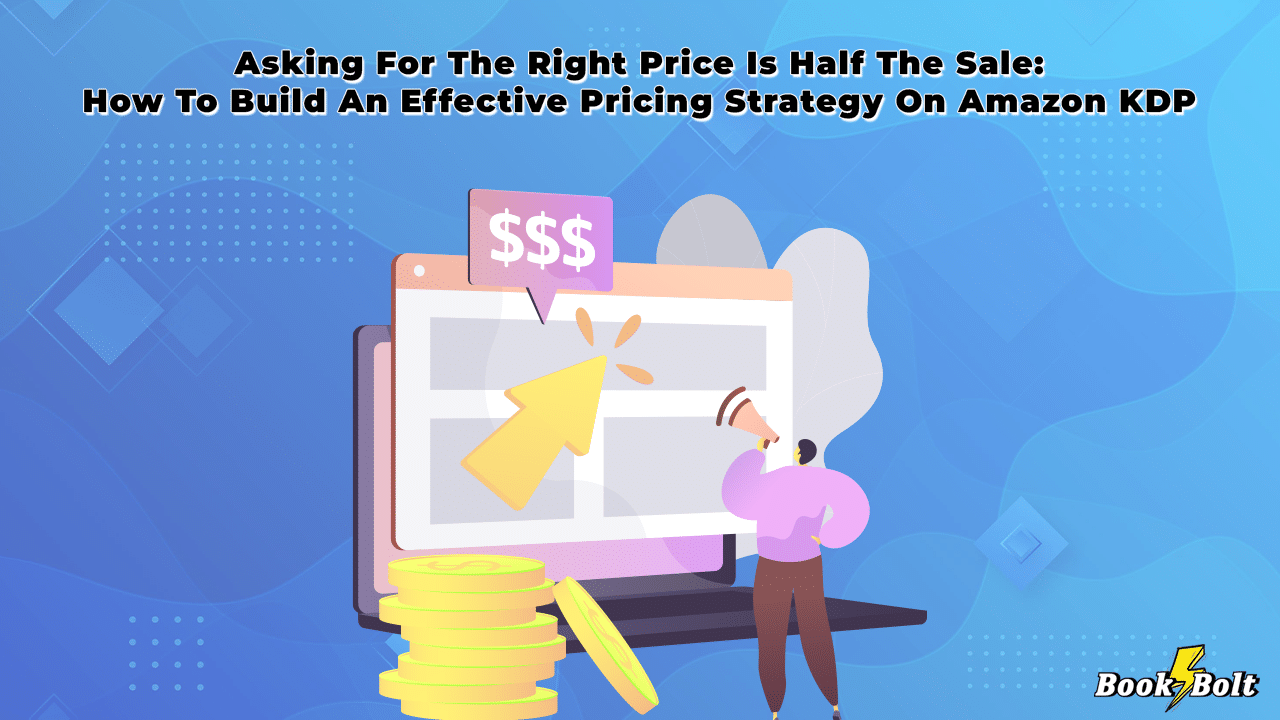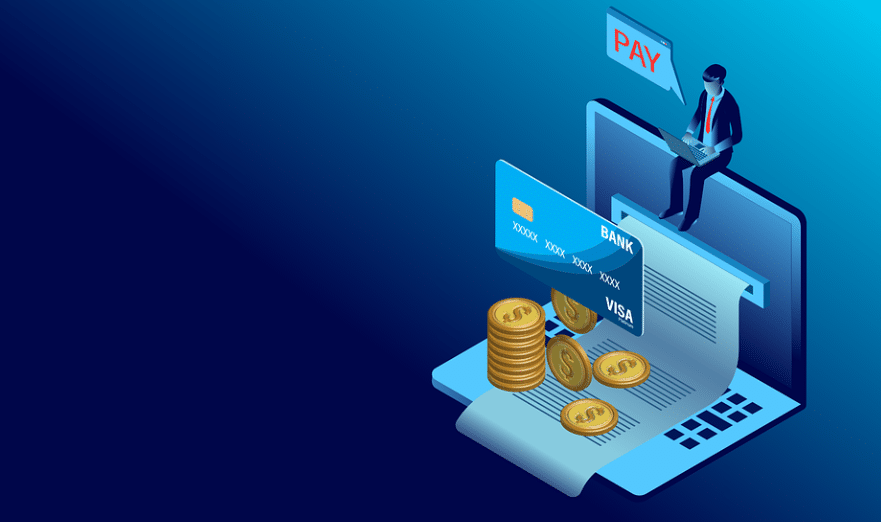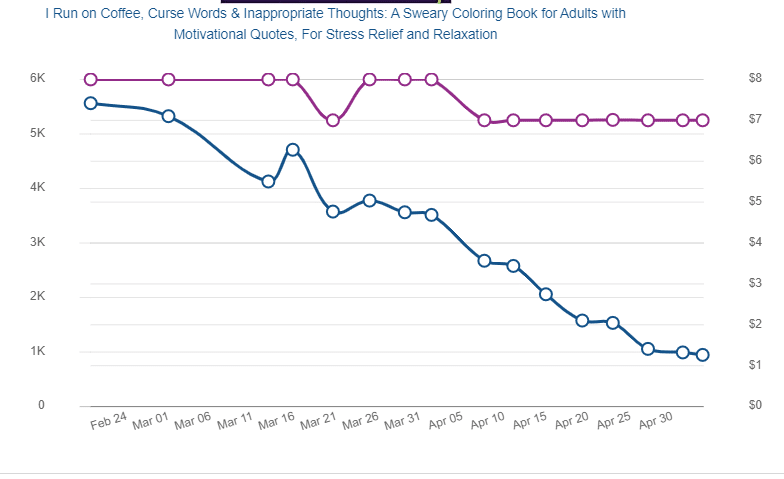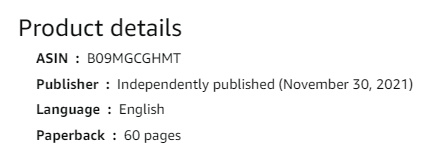
There are many reasons why a Seller would wish to sell no and low-content books through Amazon KDP. There is literally no risk to the Seller with a high potential for earning a passive income. There is no product cap, which means no cap in your income. It’s a low maintenance business that requires a few hours of input to get the design out and the print-on-demand (POD) fulfilment method means no costs associated with inventory, storage, or printing. Additionally, the platform is 100% free to use.
These reasons alone should be enough to convince anyone to sell no-content and low-content books on Amazon.
But what about the listing price?
This is possibly one of the most fundamental aspects of balancing the number of sales, the impact on your sales rank, and of course, how much you get in your bank account when all’s said and done.
Wondering how to price your book? Let’s take a look at some strategies below.
How Are Amazon Book Royalties Calculated?
The starting point for any pricing strategy must take into account the type of book (whether paperback, hardcover, or both), the total number of pages, and the marketplace on which the book is being sold. These will influence the royalties and printing costs; and will ultimately determine the profit.
Paperbacks
Let’s start with paperback books, which are the most common type of print-on-demand books on the Amazon marketplace. According to Amazon, the royalty on paperbacks is 60% of the list price and is calculated using the following formula:
(Royalty rate x list price) – printing costs = royalty
In practice, if you’re selling a book for $15, at a royalty rate of 60% and you factor in printing costs for a 108-page book that’s sold on the US marketplace, you’ll get the following royalties:
(0.60 x $15) – $2.15 = $6.85
Bear in mind that printing costs differ depending on the number of pages. For example, a paperback book that’s 108 pages or less will be printed at a fixed cost of $2.15 whereas paperbacks from 110 to 828 pages have a fixed cost of $0.85 and an additional cost of $0.012 per every additional page.
Hardcovers
Moving on to hardcovers. Once again, the royalty rate for these is 60%. There is a fixed printing cost of $6.80 per book if your book is between 75 and 108 pages and an additional fixed cost of $5.50 for books that are between 110 and 550 pages long. In addition, there is an extra charge of $0.012 per page added onto the fixed amount to be factored in as well.
These costs are specific to the US marketplace. When calculating printing costs for hardcovers, these will be subtracted based on the overall page count, the ink type, and the Amazon marketplace that the book was ordered from.
Ultimately, the royalty calculation will be as follows:
(Royalty rate x list price) – printing costs = royalty
An example of this is a 108-page hardcover book that’s in black and white and is ordered from the US marketplace for $18. The printing costs would be the fixed rate of $6.80 per book. And here’s how it will look in practice:
(0.60 x 18) – 6.80 = $4.00
Why Is An Effective Pricing Strategy So Important For Success On Amazon KDP?
An effective low-content or no-content book pricing strategy would not be complete without taking the royalty calculation into account because you may be producing high-volume low-content books at over 108 pages and selling them at a low price, only to see cents appear in your bank account at the end of the month, irrespective of the quantity of sales you’ve made.
Pricing low vs. pricing average
There are generally two schools of thought when it comes to pricing strategies for no and low-content books.
The first one argues that a Seller should price according to the minimum price recommended by Amazon until they make an adequate number of sales. Once that’s been achieved, they can raise their prices higher. However, one drawback to this is that a buyer is more likely to perceive the cheaper product as low-quality and of a low value, meaning fewer sales ultimately being made.
The second school of thought argues that one should price in the region of the average for the particular niche and category of low-content or no-content book. That would result in a wider market (more visibility), customer affordability (reasonable price), and positive consumer attitude (because the product would not be perceived as low-quality).
You always have the freedom to price your book at whatever price you wish. But some foresight and calculations will be beneficial if you wish to optimize your listings. Therefore, the suggested best practice to follow is to actually price in the region of the average price (considering the printing costs, royalty rate, and the list price of the book).
One way of doing this is to work backwards. Start off by establishing your desired margin (say you’d like to earn $3 per book), calculate the fixed costs (based on the printing costs for a paperback versus a hardcover and the number of pages), the percentage royalty rate (60%), and you’re all set.
Factoring in the BSR
Another element to keep in mind is your best-sellers rank (BSR). The lower the BSR, the higher the chances of getting found by more customers on the first or second page of Amazon’s search results. The reason for this is clear. Customers and general search engine users rarely go beyond the first page of the search results simply because the various algorithms rank the most relevant results in terms of quality first.
Achieving a low BSR, however, is one of the trickiest games on Amazon KDP. It requires an integrated strategy (keywords, title, description, cover art, interior, etc.) and not only a competitive pricing approach (which includes calculating the price, royalties, and fixed costs).
Asking for the right price, while striving for a low BSR is the ultimate strategy on Amazon KDP, but also the hardest thing to achieve. In the end, it is a strategy that is likely to yield the best and most financially rewarding results.
Dissecting A Pricing Strategy
Let’s take a look at an actual Seller in the top 100 category of coloring books for adults. SwearyMom Publishing began their venture in November 2021 and has, since then, received the coveted “#1 bestseller” badge. This publisher sells the “I Run on Coffee, Curse Words & Inappropriate Thoughts: A Sweary Coloring Book for Adults with Motivational Quotes, For Stress Relief and Relaxation Paperback”.
Starting their sales at $7.99 (just above the average price at $7.18) in February, the corresponding BSR was at 5,556. A month later, the price dropped by $2 resulting in a dip in the BSR, reaching an even lower sales rank of 3,568. Seeing this dip, the Seller possibly thought that they could rely on the low BSR to get more visibility and therefore higher sales and again hiked the price up to the original $7.99 a couple of days later only to see that the BSR increased once again.
Seemingly content with this strategy, SwearyMom Publishing then kept the price fixed with the BSR fluctuating in the region of 3,770 to 3,507. But the best strategy for them was when they decreased the price by $2 again, and then they really saw results with a low BSR of 984 as of May 1st, 2022.
What becomes clear from this example is that momentum and pricing are crucial to achieving a low BSR.
Furthermore, when examining the pricing strategy of this particular listing, it’s important to take into account the number of pages, which stands at 60. This falls within the Amazon “sweet spot”, with the Seller only paying a fixed cost of $2.15 for printing. Why? Because it’s under 108 pages. There are no additional pages offered and there is no hardcover option. Therefore, with low printing costs, the higher spectrum of the royalty percentage of 60% will apply. This means the Seller benefits financially both ways.
When Is It A Good Time To Increase Or Lower The Price For A Better Financial Impact?
Increasing or lowering the price of a low-content or no-content book listing involves a lot of careful observations. This will mean monitoring the total number of sales, the corresponding BSR, as well as customer reviews and ratings. The more satisfied customers are and the higher the ratings, the more social proof there is that the product is valuable.
If a Seller sees that a product isn’t selling as well as they would like, they may consider experimenting with lowering the price until the BSR improves and more momentum builds up around the sales. Then, when the BSR is at an acceptably low level, the price can be hiked by a few dollars again while always keeping in mind the aspect of highest, average, and lowest price for that niche and category of low-content books.
Last but not least, it’s always worthwhile looking at what your competitors are doing to ensure you are offering a product of value at a reasonable price.
In Closing
Book Bolt is the ultimate tool on the market to examine pricing strategies, BSR fluctuations that correspond with drops or hikes in prices, and so much more.
The Cloud tool offers you both a bird’s eye view and a more in-depth analysis of approaches employed by Sellers to help you emulate their success. While there is no single pricing strategy that works for every Seller, some of the principles discussed above make financial sense and can impact on your bottom line.
You can grab Book Bolt for a mere $9.99 per month, and it also comes with a free 3-day trial!





